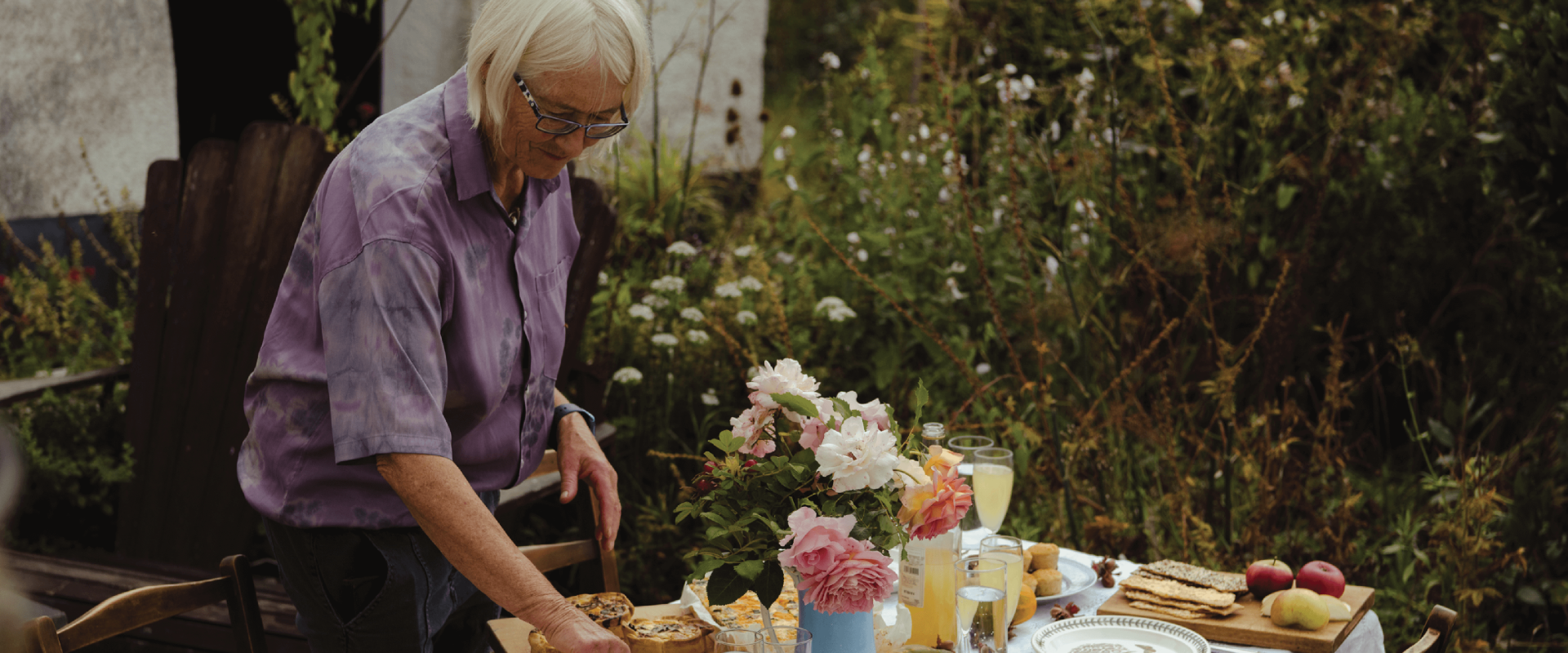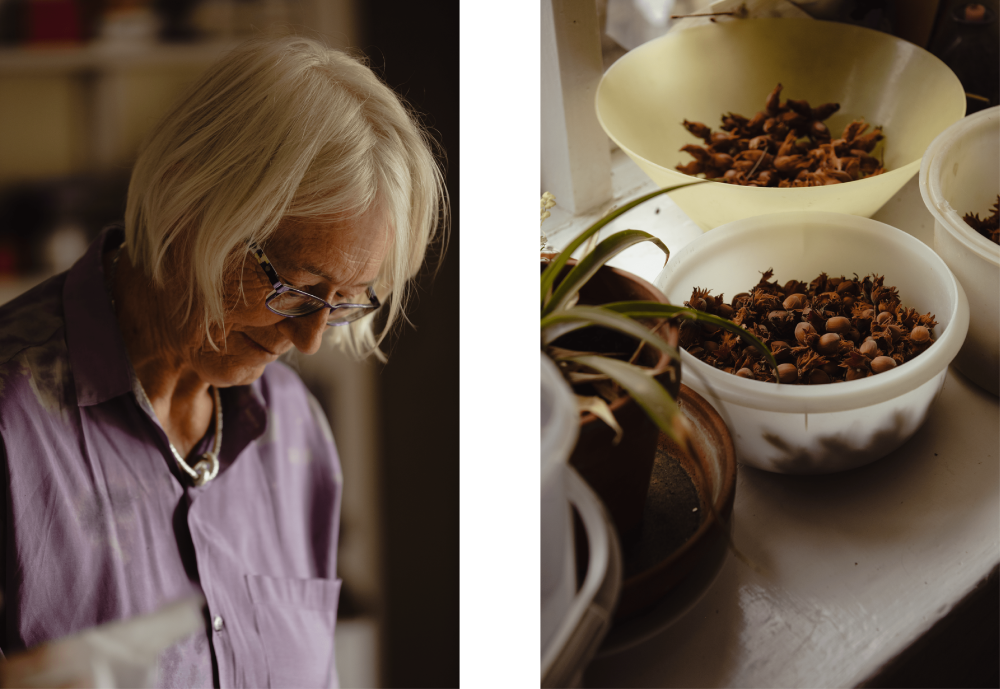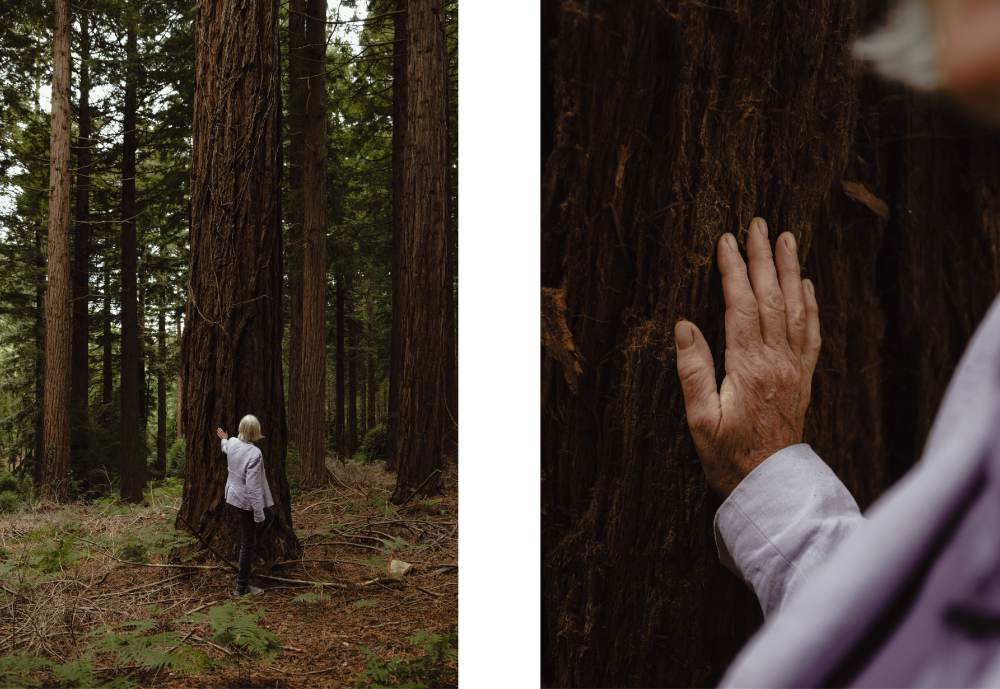Words: Charlie Monaghan
Photography: Elliot Sheppard
Our autumn menu this year goes heavy on Devonshire Red, a West Country take on the Leicestershire classic, which you’ll find in our seasonal savoury slices and quiches. The farmer and cheesemaker behind this ingredient is Mary Quicke, whose family have been rearing dairy cows and making cheese on their farm in Devon since 1540. Discover how Mary’s holistic approach to her land, animals and craft not only creates great cheese, but does so in ways that mean her family can be here for generations to come…
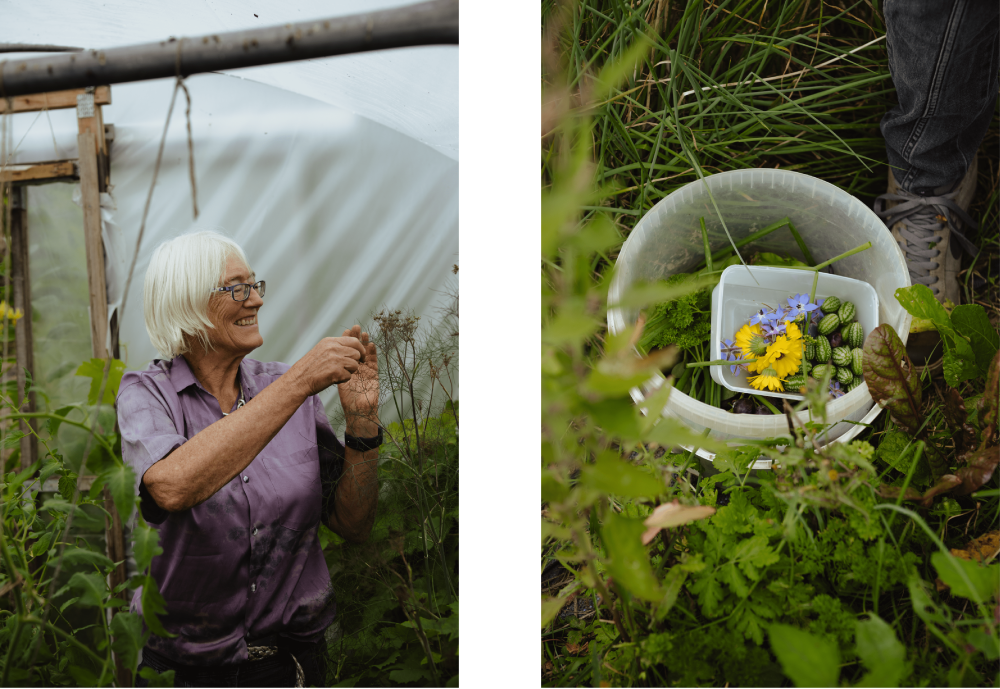
“Nature is chaos. We humans think we’re in control, but it’s all just a pretence,” proclaims Mary Quicke as she stops briefly in between sprints around her kitchen garden in which everything from chervil, cucamelons, shiso, wild rocket, borage flowers and rose petals are making their way into a bucket she’s filling for a lunchtime salad. We’re at her home in Devon, a secluded farmhouse in a forest clearing planted with an abundance of edible and decorative plants. It’s late September and the smell of rosehips fills the air. If control of nature really is a pretence, Mary seems wisely to have opted for a collaboration instead.
And not just with her vegetable patch. As a 14th-generation dairy farmer who has dedicated her working life to the preservation and promotion of traditional cheesemaking, Mary has negotiated a relationship with her land, her animals and all the ecological processes that go with farming, through which exceptional cheese is produced without a heavy toll on the natural world. The farm today sequesters 84 per cent of its carbon and is aiming to be net zero by 2030, which Mary talks about without a trace of conceitedness, only excitement and passion.
Along with her work on the 550-acre farm, Mary is nothing short of a cheese pioneer, having founded the Academy of Cheese in 2013 with the aim of furthering appreciation and education around the craft, for both professionals and customers. To date, over 5,000 people have studied the academy’s courses in over 80 countries around the world, all because of Mary’s deeply felt purpose that everyone should be inspired by humanity’s connection to farming and its outputs.
Over a lunch that featured Mary’s kitchen garden salad and GAIL’s autumnal quiches and savoury slices all made with Quicke’s Devonshire Red cheese, we discussed everything from the beauty of cows to the phenomenology of time as a farmer…
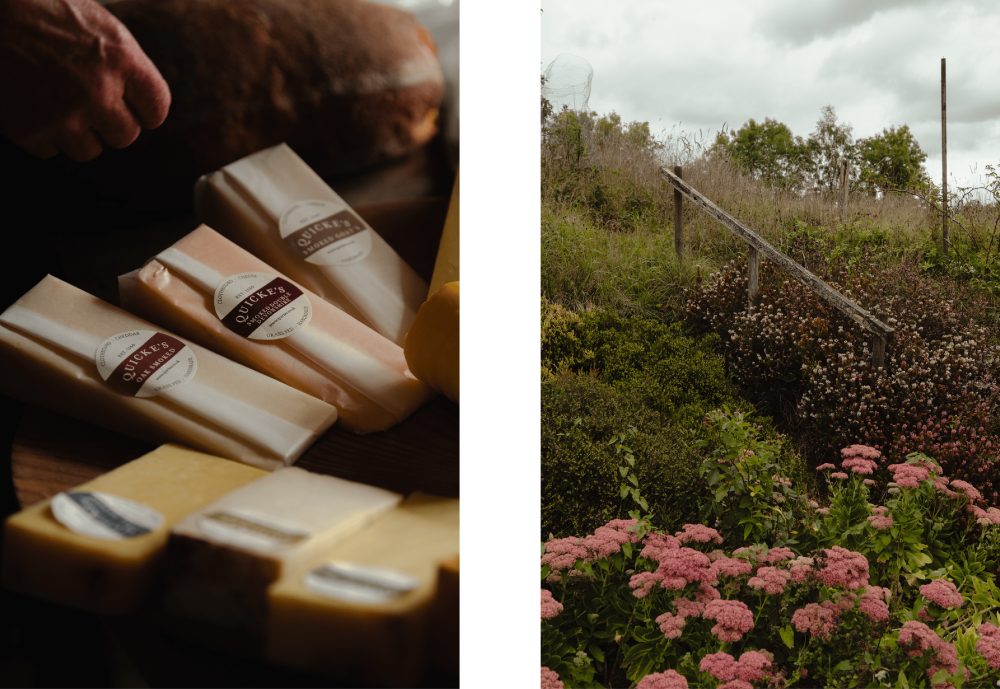
Mary, you grew up here and then came back to take over the farm – what made you return?
“My mother had set up the cheese dairy in 1973. She had been an artist and was trained by people like Henry Moore, who told her art school was training to do anything. So she thought fine, I can raise six kids, I have the training to do anything, let’s make cheese.
“I just thought it would be a real privilege to be involved so my husband, Tom, and I came back to run the farm in 1987. I fell in love with how you get to see things right the way through from the grass growing, through these beautiful, generous animals, into lovely cheeses.
“Back then the farm was making quite a small amount and it wasn’t being aged past three months. When we came back we rebranded a little bit to make the connection between the land and what we make – we became the first people to say, ‘This is cheese from this farm’. And we grew from there.”
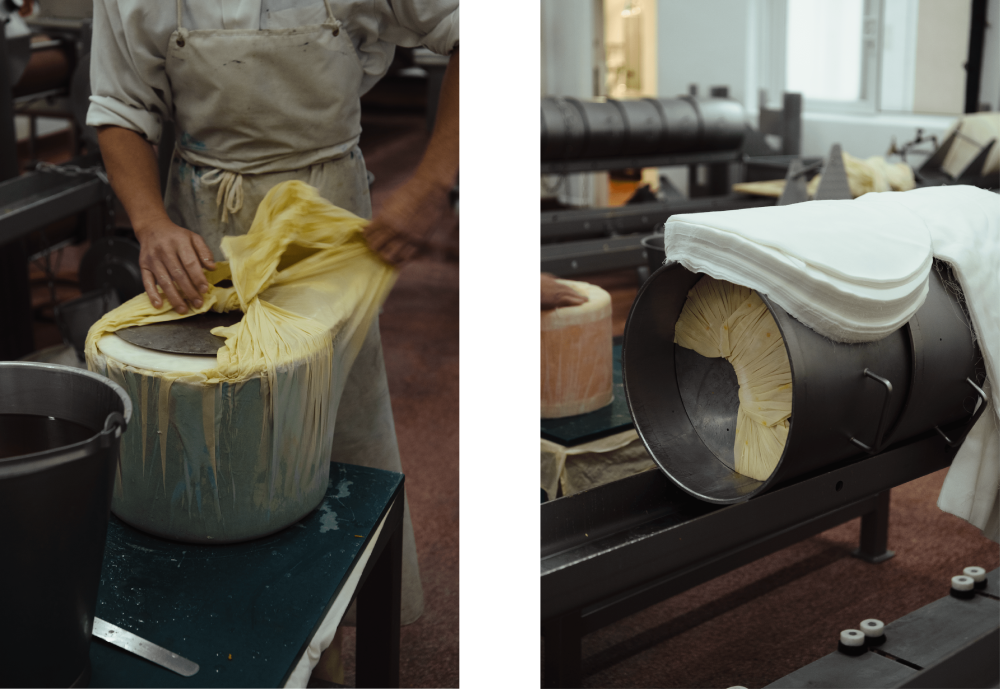
WHAT WAS important to you to not compromise as you got bigger?
“I very much wanted to retain the handmade element in the making of the cheese. We grew our herd so we could supply all the milk we needed, rather than buying from other people. For me, the grass-fed element is essential. So is the cloth binding of the cheese so it can have a conversation with the outside world and acquire flavours from that. I never want to make so much that we would lose those things, or, if we are to make more, I want to find ways to do it that don’t compromise those core things.
“So, at the moment, I want to ease some of the heavy lifting involved in making cheese. The wheels are 27kg and they are in moulds that are 13kg, and the making process involves lots of lifting and twisting. If we can make that easier we could open it up to more people so women could make the cheese too, which currently they don’t.
“If you look at parmesan makers, the best ones are still making it like they always have but no one is lifting 35kg of cheese – they’ve got machines to do that bit because it makes no difference to the flavour. I think it’s attention and intention that people provide that’s important, so that each batch of milk makes the very best cheese.”
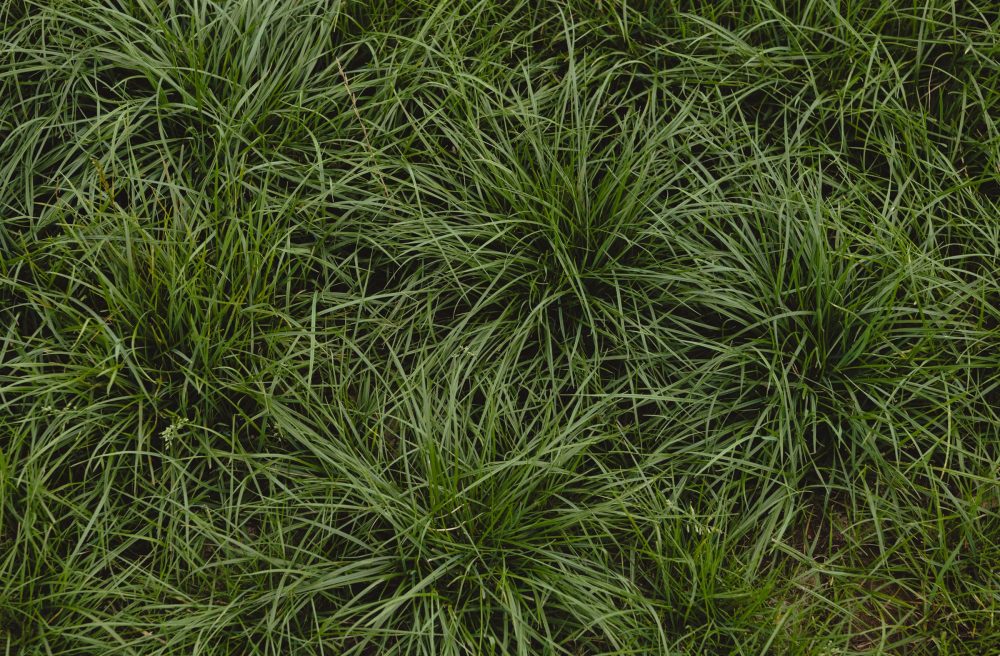
Making the cheese is one part of what you do, but there’s also the rearing of your cows – what is important to you there?
“We look at how we can rear the animals in the best way so they live longer and aren’t pushed to produce. I’m happy that the cows are giving the right amount of milk for how we’re grazing. It’s important to me that we don’t lose cows along the way, that we’re looking after them. We’ve got fewer animals in the system producing the same amount of milk, without them working so hard.
“The way we rear them is about them contributing to this natural cycle of a healthy farm. They spread manure, which fertilises the soil, which grows the grass which they eat. So they feed themselves in some ways, and lay their own beds.”
Can you tell us more about the farming cycle you mentioned – what’s that about?
“It’s the relationship with the landscape, the environment, and with people. We’re integrated into the environment and we’re looking to see how we run the whole process in the least impactful way, that’s most in tune with nature. I don’t want to go into platitudes! But it’s honouring all the processes along the way; expressing what this land has to offer; having a conversation with where we are.
“Obviously reducing our carbon emissions is a big priority. When we started thinking about it we were amazed at how much our woodlands are doing to remove greenhouse gases, which as we know dairy farming produces a lot of. Our woodlands date from the 1880s when a lot of cheap grain came to Britain from Canada and, in response, one of my ancestors returned what was farmland to woodland – a sort of early re-wilding project. In the 1950s my parents planted these beautiful redwood trees that have been growing ever since.
“The trees are taking some of the emissions from the farm out of the air. And also we bed the calves on oak woodchips, which we then compost and put back into the land to help grow the organic matter in the soil, so there is a circularity there. And we also use woodchips to smoke the goat’s cheese.”
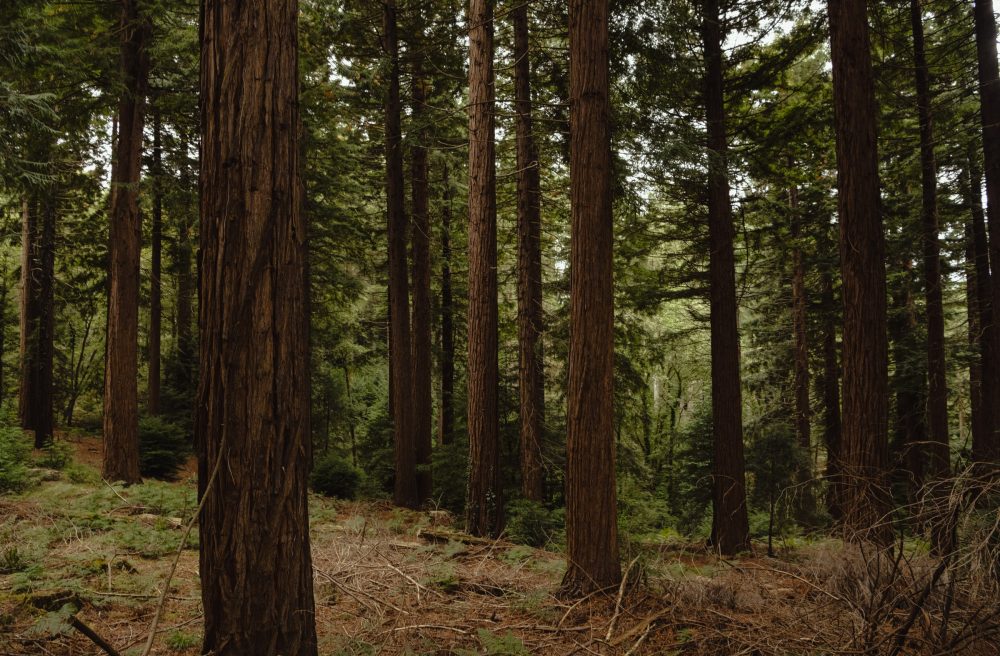
What’s the destination for your mission of reducing emissions?
“I would like us to be net zero by 2023, just by how we’re farming – not by buying carbon credits in Thailand or whatever. And I want to set an example and show that you can farm in a way that works for the planet, looks after the soil, sequesters carbon, and has biodiversity, at the same time as making lovely food, all while doing that cost-effectively.”
Can you tell us about your starter cultures and what’s special about them?
“Originally cheese would have been made from the natural souring of milk. There was an amazing microbiologist, John Lewis, who, in the 1960s and 70s, went to all the best dairies in the south-west of England and collected the whey starters that were giving the best flavour, and compiled them into a library of about 400. They were deep-frozen and bought out every now and again, and our starter originates from them.
“Because they are from the natural souring of milk they’ve got a really complex set of microorganisms. The industrial ones would be quite simple, maybe with one or two types of bacteria, but what we’re using has lots of microbes growing in the milk at a different rate, making a different contribution to the cheese and adding lots of layers of flavour.”

It’s all quite magical, in a way, and very beautiful.
“Oh I find the whole process of making cheese so beautiful. I just do. I just, yes… I don’t know if I can communicate it. The whole interconnected nature of it is so beautiful. And the steps are so beautiful along the way and, like everything, it’s fractal – the more you look the more wonderful detail there is. If you know just something from far away it looks quite simple and then the closer you get to it the more details there are to know, to appreciate.”
What are your highlights in the process?
“The first curd in the cheesemaking process is exquisitely beautiful, almost sculptural. The milk going into the vat is wonderful. I think the cows are very beautiful. The grass when it’s just ready to be eaten. I love the way the curd changes in the vat, ending up in these beautiful wheels of cheeses, that appear like glowing cylinders. And then the mould grows on the cheese making all these amazing patterns from their contribution to the process.”
How did the Devonshire Red come about?
“My mum was quite keen that we made other cheeses, along with the original cheddar. And then when we came back Tom was finding people who wanted us to make a Red Leicester, and over time we started asking, ‘Why is it Red Leicester if we’re making it our own way? We should call it Red Devonshire.’ We were looking for something we could make available a bit younger, at three months, but that had some lovely lemony notes, still some complexity and nutty flavours. The red comes from annatto, which is the seed of a South American tree, Bixa orellana. And we use a vegetarian rennet.”
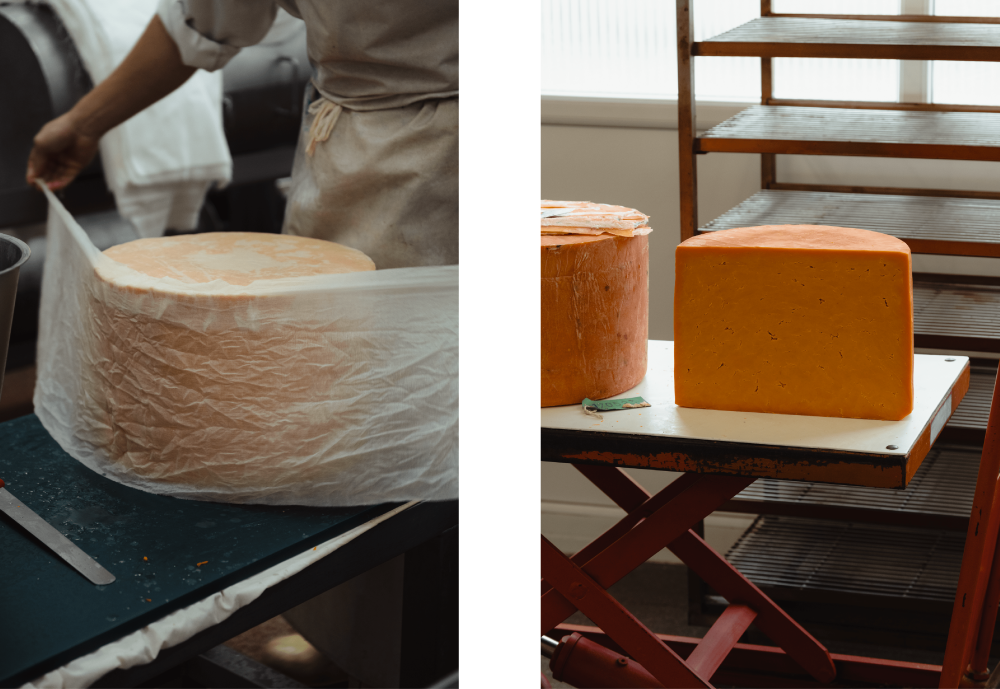
How has the culture around cheese changed since you took over and what power do people have in changing food?
“When we first started people just couldn’t work out why we were doing this funny cloth-bound
thing – the modern way is making it by machines into nice square blocks. You take out so much of the distinctiveness that way, although you reduce cost, of course. But once you take out distinctiveness and it’s only about the price, there’s nothing else you can look for and you’ve removed it’s link with the place that made it.
“Where people come in is that we can only make cheese because people buy it, and people will only buy it if they know there is something different about it, that it gives a richer experience. All of us have so much food in this country, I think it’s about, for those of us who don’t have to worry, the distinctiveness of our food – where does it come from? how is it produced? I think eating and choosing food is a deeply political act, you’re summoning everything in the world through what you buy. Your money is endorsing that particular practice, that way of producing food, that flavour, that impact on the environment, that thing you want for your own body.”

And farming is by extension a political act?
“Yeah, it is. Should we put our minds to it we could take a hugely significant amount of carbon out of the atmosphere through farming. There is that opportunity, so if you just go for food with the lowest possible price, some of the cost sits with the natural world. We have to know that, because it doesn’t say it on the packet.
“I feel it’s a purpose of mine that we are all inspired by our connection with food and farming because it’s important to the health of the planet. And it’s important to tell the story of why animal farming is a part of that. There is a whole system, a natural process at play, and I’ve found that only doing arable farming is really hard on the soil. When we’ve done that on fields on this farm, the soil gets unhappy and loses structure. If you look at it under a microscope it is a simpler picture – there is less ecology in it. We are the stewards of the natural world and we have to steward it for richness.”
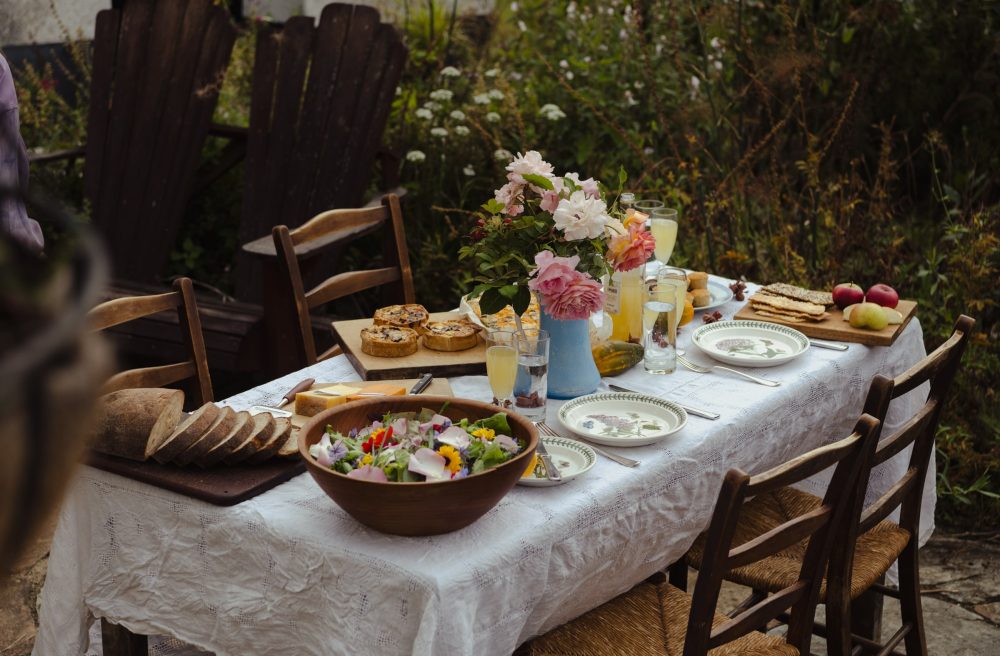
There’s the stewardship of the natural world and the planet, but there is also a sense of stewardship here, in this place your family have been for hundreds of years. Do you think a lot about legacy and the future?
“My father said, ‘Live like you’re going to die tomorrow and farm like you’re going to live forever.’ And that’s the way we should look at it.
“I think lots of people see time as linear, it goes from the past to the future. In farming, it’s very much in a cycle, an annual cycle, and sometimes even longer than that. If time is in a cycle then things come round again. It’s not that the past has gone away and the future is somewhere over there – in farming, you have to think about it differently.”
You have also done a huge amount of work for cheese outside of the farm – what promoted you to set up the Academy of Cheese?
“I noticed that in cheese shops the person behind the counter looked terrified that someone might ask them a question and they wouldn’t know how to answer it, and the person in front of the counter was looking at lots of things they didn’t understand and they were frightened of asking any questions in case they looked stupid. I wanted to change that.
“We started speaking to the wine and spirits education trust and they recommended an education programme that should be based on tasting, it had to be offered at several levels of depth and it had to be available for consumers and professionals – which is exactly what we wanted. We also wanted it to be available in person or online, or self-study, but still based on tasting. Now over 5,000 people have studied the course in 81 countries over the world. It feels like it’s really struck a cord.”
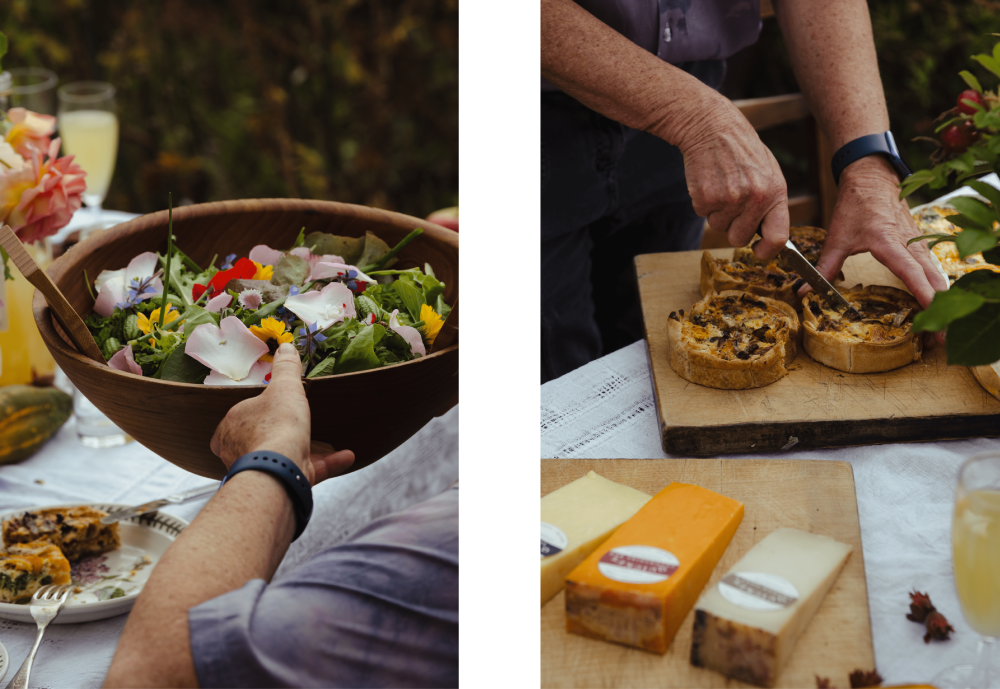
Why do you think that is?
“I hope cheese is undergoing something like what happened with wine. Wine was once either highly commodified or there were a few posh people in an elite, exclusive club who knew about it. And then with the sommelier programmes, suddenly people were able to learn about it, to understand it. And now you can go into any supermarket, pub or restaurant and there is a fantastic selection.
“So that’s the vision for cheese: that well-made cheese is available at every food outlet on the planet. And to really connect people with cheese, so that they get to choose, they get to say, ‘I want this rather than this’. And that people do that because it’s fun, because they are interested.
“I’m really keen these lovely foods shouldn’t just be elite – we should all have food that nourishes our bodies. I think it was Carlo Petrini, the founder of the Slow Food Movement, who said ‘Gastronomy is greed, eco is boring, what we want is eco-gastronomy.’ I really like that idea of working in harmony with natural processes to make something delicious in a way that works for the people who make it, and who eat it.”
Mary, thank you, it’s been such a pleasure.
“It’s always a pleasure. GAIL’s and Quicke’s have been working together for what, 10 years now, at least? To be in an ongoing conversation that is, yes, about creating lovely things to eat, but also about a shared understanding of how we should go about that, is such a privilege. Businesses like ours need to work together and support each other so that the ways of farming and making food like what I’m doing here can be put to use and people see the value in them. Then it becomes bigger than one farm, but a whole interconnected web of people doing things in ways that are better.”
Want to hear from other farmers doing a good job of looking after the natural world, all while making lovely food for our bakeries? Read about how the two farmers who make our crips see themselves first and foremost as keepers of the soil here. And if you’re tempted by the quiches and slices on Mary’s lunch table, you’re in luck: they are in our bakeries now.
